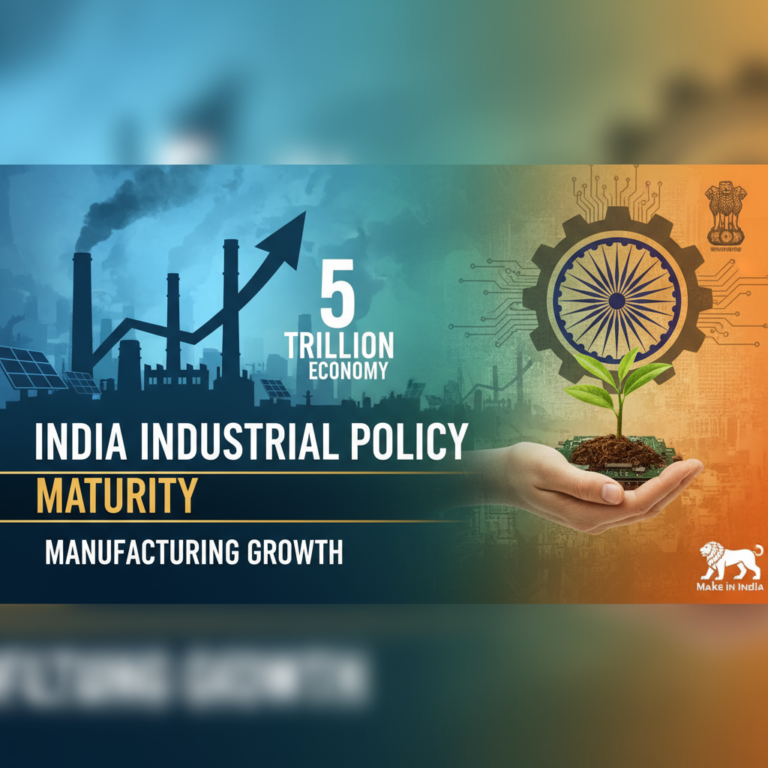🌟 Introduction: Why 2025 Is a Defining Year for Crypto
Cryptocurrency has never been just a buzzword—it has consistently challenged the way we think about money, ownership, and trust. But as we step into 2025, crypto isn’t just about Bitcoin speculation anymore. It has evolved into a multi-trillion-dollar ecosystem that touches nearly every industry: finance, art, gaming, real estate, supply chains, and even governance.
With institutional adoption on the rise, governments rolling out digital currencies, AI fusing with blockchain, and new financial models like DeFi 2.0, 2025 promises to be a groundbreaking year for crypto. Investors, developers, businesses, and even governments cannot afford to ignore the top cryptocurrency trends shaping the next wave of digital transformation.
In this article, we’ll break down the 10 hottest and current trends in cryptocurrency for 2025, explain why they matter, and give you clear insights into how they may impact the future of money.
🔥 Trend 1: Bitcoin ETFs Going Mainstream
What’s Happening?
After years of debate, Bitcoin Exchange-Traded Funds (ETFs) have become mainstream in 2025. These financial instruments allow investors to buy and trade Bitcoin on stock exchanges without needing to deal with crypto wallets or exchanges.
Why It Matters:
- Brings massive institutional money into crypto.
- Simplifies Bitcoin exposure for retail investors.
- Increases liquidity and price stability.
Real-World Example:
BlackRock, Fidelity, and Vanguard—some of the world’s largest asset managers—now offer Bitcoin ETFs. In fact, U.S. Bitcoin ETFs have seen inflows of over $30 billion in Q1 2025 alone.
đź“Š Comparison Table: Bitcoin ETF Options in 2025
| ETF Provider | Management Fee | Assets Under Management (AUM) | Unique Feature |
|---|---|---|---|
| BlackRock | 0.25% | $12B+ | Institutional-first model |
| Fidelity | 0.35% | $8B+ | Retail-friendly exposure |
| Vanguard | 0.20% | $6B+ | Lowest fees in market |
🔥 Trend 2: Central Bank Digital Currencies (CBDCs)
What’s Happening?
Governments worldwide are experimenting with CBDCs, state-backed digital currencies. India has launched its Digital Rupee pilot, while China is expanding the Digital Yuan, and the European Union is preparing the Digital Euro.
Why It Matters:
- Gives governments more control over monetary policy.
- Provides fast, low-cost, and transparent digital payments.
- Raises privacy and surveillance concerns.
Example:
India’s Digital Rupee is already being tested in retail payments, aiming to reduce cash dependency and boost financial inclusion.
👉 Key Insight: CBDCs won’t replace Bitcoin, but they may coexist as complementary systems. While Bitcoin remains decentralized and borderless, CBDCs will dominate regulated economies.
🔥 Trend 3: AI and Blockchain Fusion
What’s Happening?
The fusion of Artificial Intelligence (AI) and Blockchain is one of the most exciting innovations of 2025. AI provides predictive insights, while blockchain ensures transparency, security, and immutability.
Why It Matters:
- Fraud detection in crypto transactions.
- Smart contracts enhanced by AI for autonomous decision-making.
- Decentralized AI marketplaces where models and data can be traded securely.
Example:
Fetch.ai and SingularityNET are pioneering AI-driven crypto ecosystems where decentralized AI agents interact to solve real-world problems.
🔥 Trend 4: Ethereum 2.0 Scaling
What’s Happening?
Ethereum has finally completed its transition to Ethereum 2.0, which uses Proof of Stake (PoS) and advanced sharding techniques.
Why It Matters:
- Transaction costs (gas fees) have dropped by nearly 80%.
- Transactions per second (TPS) increased from 15 to over 100,000.
- Energy consumption reduced significantly.
Example:
Popular dApps like Uniswap and Aave now process millions of transactions daily with minimal delays and fees.
🔥 Trend 5: Layer 2 Solutions Exploding
What’s Happening?
While Ethereum 2.0 improved scalability, Layer 2 solutions like Arbitrum, Optimism, and zkSync are booming.
Why It Matters:
- Offloads congestion from main blockchains.
- Makes microtransactions and gaming NFTs affordable.
- Supports mass adoption of decentralized finance (DeFi).
Example:
Arbitrum is now hosting over $15 billion in total value locked (TVL), with DeFi apps thriving on cheaper transactions.
🔥 Trend 6: Real-World Asset Tokenization (RWA)
What’s Happening?
Imagine buying a fraction of a $10M luxury property in Dubai or a Picasso painting for just $100. This is possible with RWA tokenization.
Why It Matters:
- Democratizes access to real estate, art, and commodities.
- Provides liquidity to traditionally illiquid assets.
- Expands investment opportunities for retail investors.
Example:
Gold-backed tokens like Paxos Gold (PAXG) and tokenized U.S. Treasury bonds are gaining traction among investors seeking stable yields.
🔥 Trend 7: DeFi 2.0
What’s Happening?
DeFi (Decentralized Finance) is evolving into DeFi 2.0, focusing on sustainability, security, and usability.
Why It Matters:
- Provides self-sustaining liquidity models.
- Reduces risks of hacks and rug pulls.
- Brings DeFi closer to mainstream finance.
Example:
Protocols like OlympusDAO and Curve Finance are introducing new mechanisms to maintain liquidity without constant token incentives.
🔥 Trend 8: NFTs Beyond Art
What’s Happening?
NFTs are no longer just overpriced JPEGs—they’re becoming utility-driven assets.
Why It Matters:
- Used in music rights, ticketing, gaming, and identity verification.
- Bridges the gap between Web2 and Web3 experiences.
- Creates passive income opportunities for creators.
Example:
Major brands like Nike and Adidas now issue NFTs tied to exclusive physical products.
🔥 Trend 9: Meme Coins Evolution
What’s Happening?
Meme coins like Dogecoin, Shiba Inu, and PEPE are evolving into ecosystems with real utility.
Why It Matters:
- Moves from speculative hype to actual use cases.
- Engages a broader audience in crypto adoption.
- Proves that community-driven assets can thrive.
Example:
Shiba Inu’s Shibarium Layer 2 blockchain is gaining momentum in gaming and micro-payments.
🔥 Trend 10: Global Crypto Regulations
What’s Happening?
Regulation is no longer optional. Governments are setting clear frameworks for cryptocurrencies.
Why It Matters:
- Reduces fraud and scams.
- Encourages institutional adoption.
- Provides clarity for retail investors.
Example:
India has introduced a 20% tax on crypto gains, but also started creating a licensing framework for exchanges, signaling maturity in regulation.
âś… Conclusion: The Crypto Future in 2025
Cryptocurrency in 2025 is no longer just about speculation—it’s about integration, innovation, and legitimacy. From Bitcoin ETFs opening the floodgates for institutional money to CBDCs reshaping how nations think about money, the future of crypto is being written right now.
If you’re an investor, builder, or enthusiast, 2025 is the year to stay informed and agile. The winners will be those who adapt to new trends quickly while managing risks wisely.
🔥 15 FAQs on Cryptocurrency (With Detailed Answers)
1. What is cryptocurrency, and how does it work?
Cryptocurrency is a type of digital or virtual currency that uses cryptography for secure transactions. Unlike traditional money, it’s decentralized and operates on a blockchain network — a distributed ledger that records transactions across multiple computers.
For example, Bitcoin transactions are verified by miners through a process called proof-of-work, while other cryptocurrencies like Ethereum may use proof-of-stake. This ensures transparency, reduces fraud, and eliminates intermediaries like banks.
2. Why are cryptocurrencies so popular today?
Cryptocurrencies are popular because they offer:
- Decentralization (no central authority controls them)
- High returns (though risky, early investors in Bitcoin and Ethereum saw massive gains)
- Borderless transactions (you can send crypto worldwide in minutes)
- Inflation hedge (limited supply makes assets like Bitcoin attractive in uncertain economies)
Social media hype, celebrity endorsements, and institutional adoption have also fueled mainstream interest.
3. What are the top cryptocurrencies to watch in 2025?
Some of the most promising cryptocurrencies for the future include:
- Bitcoin (BTC) – Digital gold, best store of value.
- Ethereum (ETH) – The backbone of smart contracts and decentralized apps (DApps).
- Solana (SOL) – Known for high-speed transactions.
- Polkadot (DOT) – Connects multiple blockchains.
- Polygon (MATIC) – Scales Ethereum for cheaper and faster transactions.
- XRP (Ripple) – Popular for cross-border payments.
Remember: Always research fundamentals before investing.
4. How safe is investing in cryptocurrency?
Cryptocurrency is highly volatile. While blockchain technology itself is secure, risks include:
- Market volatility (prices can swing 20–30% in hours)
- Scams and hacks (fake exchanges, phishing, rug pulls)
- Regulatory uncertainty (governments may impose restrictions)
To stay safe: use trusted exchanges, enable two-factor authentication, and store assets in hardware wallets instead of online exchanges.
5. What is blockchain, and why is it important?
Blockchain is the underlying distributed ledger technology that powers cryptocurrencies. Each transaction is stored in a “block,” and blocks are linked together chronologically, making them nearly tamper-proof.
Importance of blockchain:
- Transparency – Every transaction is visible.
- Security – Data is encrypted and decentralized.
- Efficiency – Faster cross-border transactions compared to traditional banks.
Beyond crypto, blockchain is also used in supply chains, healthcare, voting systems, and digital identity.
6. How are cryptocurrencies taxed in India and globally?
In India, cryptocurrency gains are taxed as virtual digital assets (VDAs):
- 30% tax on profits (no deductions allowed except cost of acquisition).
- 1% TDS (Tax Deducted at Source) on transactions.
Globally:
- USA – Treated as property; subject to capital gains tax.
- UK – Also taxed under capital gains rules.
- EU – Varies by country but increasingly regulated.
Always keep records of your trades for tax filing.
7. What is DeFi (Decentralized Finance)?
DeFi refers to financial services built on blockchain networks that eliminate intermediaries like banks. Examples include:
- Lending platforms (Aave, Compound)
- Decentralized exchanges (DEXs) (Uniswap, PancakeSwap)
- Yield farming & staking (earning passive income by providing liquidity)
DeFi allows users to borrow, lend, trade, and earn interest without banks—but it comes with risks like smart contract bugs and scams.
8. What is the role of NFTs in cryptocurrency?
NFTs (Non-Fungible Tokens) are unique digital assets stored on blockchain. Unlike Bitcoin or Ethereum, they’re not interchangeable.
Use cases:
- Art & Collectibles – Digital artwork ownership (e.g., Beeple’s $69M NFT sale).
- Gaming – Play-to-earn models like Axie Infinity.
- Virtual Real Estate – Buying land in metaverse platforms like Decentraland.
NFTs bridge digital ownership with real-world value.
9. What are stablecoins, and why are they important?
Stablecoins are cryptocurrencies pegged to stable assets like USD, EUR, or gold. Examples: USDT (Tether), USDC, DAI.
Importance:
- Reduce volatility.
- Enable faster settlements in trading.
- Widely used in cross-border payments and DeFi platforms.
They act as a bridge between traditional finance and crypto markets.
10. What are the risks of investing in crypto?
The main risks include:
- Extreme volatility – Prices fluctuate unpredictably.
- Regulatory risks – Governments may ban or restrict use.
- Cybersecurity risks – Hacks, rug pulls, and exchange collapses.
- Liquidity risks – Some tokens are difficult to sell.
- Emotional investing – Fear and greed often lead to losses.
The golden rule: Invest only what you can afford to lose.
11. What is the difference between centralized and decentralized exchanges?
- Centralized Exchanges (CEX) – Run by companies like Binance, Coinbase, WazirX. They offer liquidity and customer support but require KYC verification.
- Decentralized Exchanges (DEX) – Like Uniswap or PancakeSwap. They allow peer-to-peer trading directly from wallets, no middleman, but may have lower liquidity.
Each has pros and cons; beginners often start with CEX for ease of use.
12. How do you choose the right cryptocurrency exchange?
Look for:
- Security features (2FA, cold storage, insurance)
- Liquidity (higher trading volume means smoother transactions)
- Fees (trading, deposit, withdrawal charges)
- Reputation (avoid exchanges with past hacks or scams)
- Regulatory compliance (registered under local financial laws)
Top options: Binance, Coinbase, Kraken, WazirX (India).
13. What is crypto mining, and is it still profitable?
Crypto mining is the process of validating transactions on a blockchain using computational power. Miners earn rewards (e.g., Bitcoin) for their efforts.
- Proof of Work (PoW) – Bitcoin mining requires expensive hardware (ASICs) and high electricity.
- Proof of Stake (PoS) – Ethereum and others now reward validators who stake coins instead of mining.
Profitability depends on electricity costs, crypto prices, and mining difficulty. For individuals, staking may be a better option today.
14. Can cryptocurrency be banned?
Technically, governments can ban exchanges and restrict banks from dealing with crypto, but they cannot shut down blockchain networks entirely.
For example:
- China has banned crypto trading but Bitcoin still circulates.
- India has strict taxation but hasn’t banned it.
- El Salvador made Bitcoin legal tender.
Thus, regulation is more likely than a full ban.
15. Is cryptocurrency the future of money?
Cryptocurrency is shaping the future of finance but may not fully replace fiat currencies. Instead, hybrid models like CBDCs (Central Bank Digital Currencies) may dominate, with crypto co-existing alongside.
However, its impact on payments, investments, DeFi, and Web3 applications makes it a strong contender for the financial future.
đź“Š Suggested Comparison Table
| Trend | Adoption Level 2025 | Risk Factor | Growth Potential |
|---|---|---|---|
| Bitcoin ETFs | High | Low | Very High |
| CBDCs | Medium | Medium | High |
| AI + Blockchain | Emerging | Medium | Very High |
| Ethereum 2.0 | High | Low | High |
| Layer 2 Solutions | High | Medium | Very High |
| Tokenization | Medium | Medium | High |
| DeFi 2.0 | Emerging | Medium | High |
| NFTs | Medium | Low | Medium |
| Meme Coins | Medium | High | Medium |
| Regulations | High | Low | High |
cryptocurrency trends 2025, bitcoin etf, cbdc india, ai blockchain, ethereum 2.0, defi 2.0, tokenization, crypto regulation 2025, crypto investing 2025, best cryptos 2025












+ There are no comments
Add yours